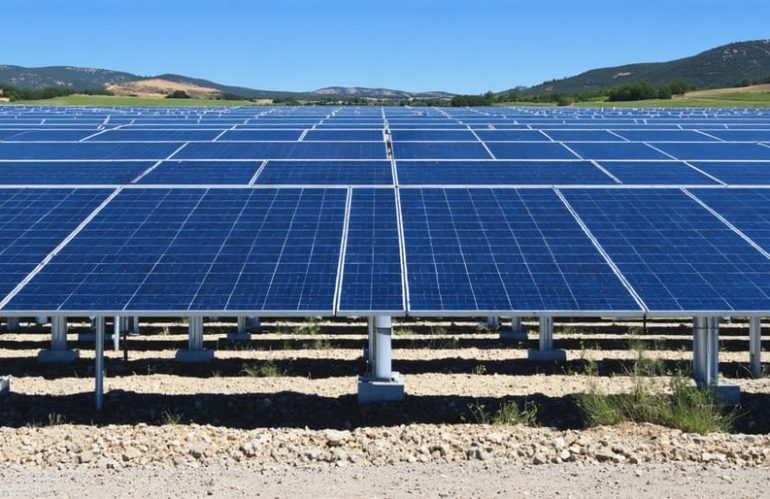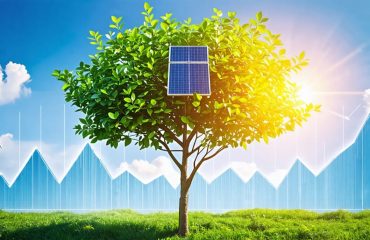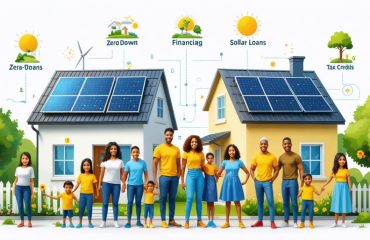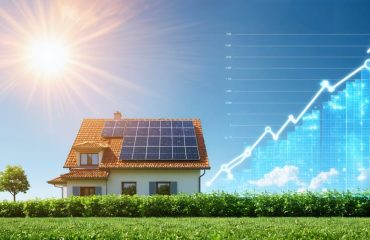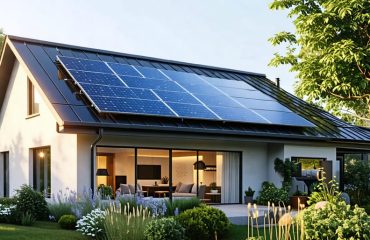A 1-megawatt solar power plant represents a significant yet increasingly accessible investment opportunity in renewable energy, typically requiring $700,000 to $1.3 million in initial capital while generating annual revenues between $140,000 and $180,000. This utility-scale installation can power approximately 200 homes and offers investors an average payback period of 5-7 years, with project lifespans extending beyond 25 years. Against the backdrop of rising electricity costs and generous government incentives, including the 30% federal tax credit, solar power plants have emerged as stable long-term investments delivering both environmental impact and compelling financial returns.
Recent market data shows that component costs continue to decline while efficiency improvements boost power generation capacity, making 2024 an opportune time to enter the solar energy market. Whether you’re a seasoned energy investor or a business owner exploring diversification opportunities, understanding the complete cost structure and profit potential of a 1MW solar installation is crucial for making an informed investment decision. This comprehensive analysis breaks down actual costs, maintenance requirements, and revenue projections based on real-world performance data.
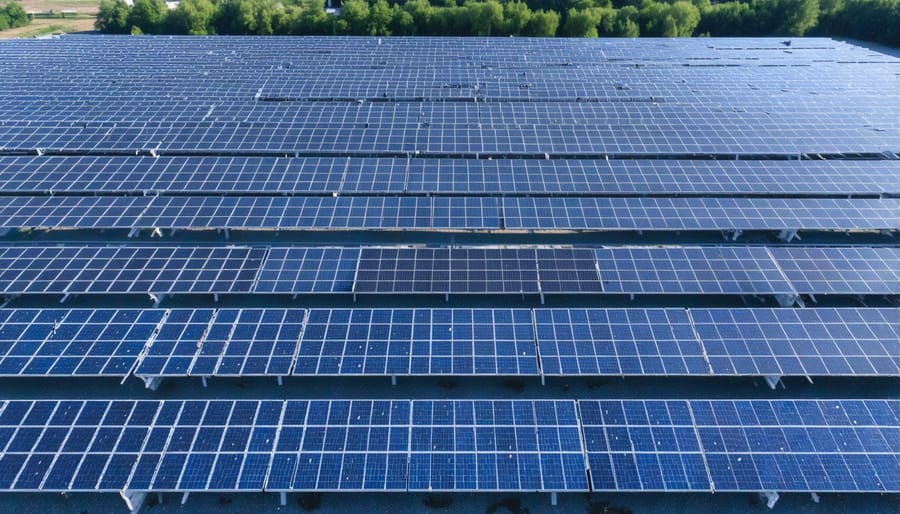
Initial Investment Breakdown for a 1MW Solar Plant
Equipment and Hardware Costs
For a 1 MW solar power plant, the equipment and hardware typically represent about 70% of the total project cost. The most significant investment goes into high-quality solar panel specifications and quantities, usually requiring approximately 3,000-4,000 panels to achieve the desired output. These panels alone can cost between $300,000 to $400,000, depending on the manufacturer and efficiency ratings.
The inverter system, essential for converting DC power to AC, typically costs between $60,000 to $100,000 for a 1 MW installation. This includes string inverters or central inverters, depending on the plant design. Mounting systems and support structures, which secure the panels and optimize their angle for maximum sunlight exposure, account for approximately $100,000 to $150,000.
Additional hardware components include:
– Cables and wiring: $30,000-$40,000
– Monitoring systems: $15,000-$25,000
– Transformers: $25,000-$35,000
– Junction boxes and combiner boxes: $20,000-$30,000
– Lightning protection: $10,000-$15,000
The total hardware cost typically ranges from $560,000 to $795,000. While these costs might seem substantial, they represent a long-term investment in reliable, high-quality equipment that will generate power for 25+ years. It’s worth noting that prices continue to decrease as technology advances and manufacturing scales up.
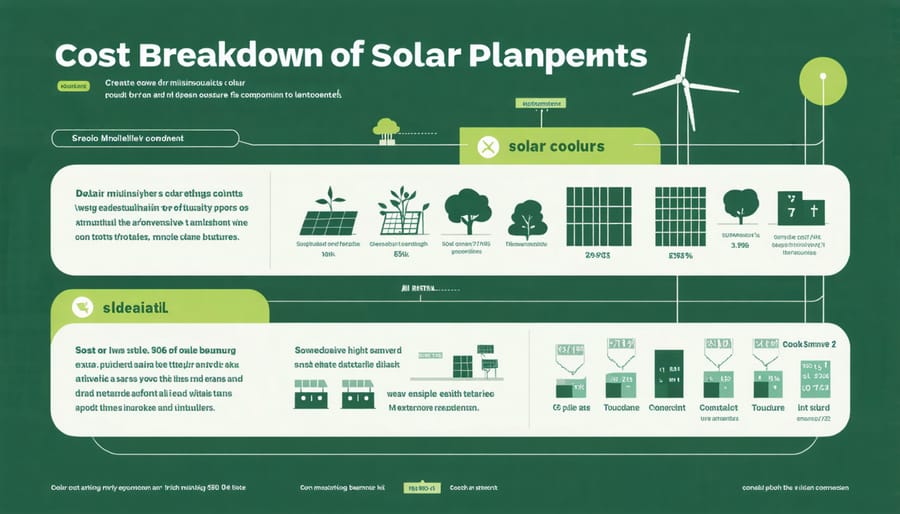
Land and Installation Expenses
For a 1 MW solar power plant, land requirements typically range from 4 to 5 acres, depending on the region and panel configuration. The land cost varies significantly based on location, with rural areas offering more affordable options ranging from $3,000 to $10,000 per acre. Urban locations near grid connection points may command premium prices up to $25,000 per acre.
The installation cost factors include site preparation, which typically requires $40,000 to $60,000 for land grading, access road construction, and security fencing. Labor costs for installation usually account for 15-20% of the total project budget, ranging from $100,000 to $150,000 for a project of this scale.
Permits and documentation form a crucial part of the expenses. These include environmental impact assessments, construction permits, and grid interconnection approval. Budget approximately $25,000 to $40,000 for permits, depending on your location and local regulations. Some regions may require additional studies or documentation, potentially increasing costs.
To optimize land usage and reduce costs, consider:
– Selecting sites with minimal grading requirements
– Negotiating long-term land lease agreements instead of purchasing
– Choosing locations with existing road access and grid proximity
– Working with local authorities early to streamline the permitting process
These initial expenses typically represent about 25% of the total project cost, making careful site selection and planning essential for project success.
Operating Costs and Maintenance
Regular Maintenance Requirements
Regular maintenance is essential for keeping a 1 MW solar power plant operating at peak efficiency. The main maintenance tasks include quarterly panel cleaning, which removes dust and debris that can reduce energy production by up to 25%. Monthly visual inspections are necessary to check for damaged panels, loose connections, or wiring issues.
The maintenance costs typically range from $6,000 to $8,000 per year, representing about 1-2% of the initial investment. This includes routine cleaning services, technical inspections, and minor repairs. It’s recommended to budget an additional $3,000-$4,000 annually for unexpected repairs or component replacements.
Most maintenance activities can be scheduled during early morning or evening hours to minimize production losses. A professional maintenance team should conduct thorough electrical system checks bi-annually, including inverter testing and thermal imaging to identify potential hotspots.
Modern monitoring systems help reduce maintenance costs by providing real-time performance data and early warning of potential issues. Many plant owners opt for comprehensive maintenance contracts with specialized solar service providers, which typically cost between $0.015 to $0.02 per watt annually.
Long-term Replacement Costs
When planning a 1 MW solar power plant, it’s essential to consider the long-term replacement costs of key components. Solar panels typically have a lifespan of 25-30 years, with manufacturers guaranteeing at least 80% efficiency after 25 years. Inverters, however, generally need replacement every 10-15 years, making them a significant recurring cost factor.
The mounting structures and cables are highly durable, usually lasting the entire lifetime of the plant with minimal maintenance. Battery storage systems, if included, typically need replacement every 7-10 years, depending on usage patterns and environmental conditions.
Here’s a typical replacement timeline:
– Solar Panels: 25-30 years
– Inverters: 10-15 years
– Batteries: 7-10 years
– Mounting Structures: 30+ years
– Cables and Connectors: 25+ years
For budgeting purposes, plan to set aside approximately 15-20% of your initial investment for component replacements over a 25-year period. This ensures your plant maintains optimal performance and continues generating maximum revenue throughout its operational lifetime.
Revenue Generation and ROI
Power Purchase Agreements
Power Purchase Agreements (PPAs) are essential contracts that guarantee a steady revenue stream for your 1 MW solar power plant. These agreements typically span 15-25 years and establish a fixed rate at which utilities or corporate buyers will purchase the electricity your plant generates.
Current PPA rates in the US generally range from $0.03 to $0.08 per kilowatt-hour (kWh), depending on your location, local energy market, and project specifics. Premium rates are often available in areas with high electricity costs or strong renewable energy incentives.
There are two main PPA structures to consider:
– Fixed-rate PPAs offer consistent pricing throughout the contract period, providing stable, predictable income
– Escalating PPAs start at a lower rate but include annual increases of 1-2%, helping hedge against inflation
Many commercial buyers prefer PPAs because they can secure clean energy at competitive rates without upfront investment. For plant owners, PPAs reduce market risk and make project financing easier by demonstrating guaranteed future income.
Before signing a PPA, carefully evaluate:
– Contract duration
– Price per kWh and any escalation terms
– Minimum production guarantees
– Grid connection requirements
– Maintenance responsibilities
Working with an experienced energy lawyer to review PPA terms is highly recommended to protect your investment and ensure favorable conditions for long-term profitability.
Government Incentives and Tax Benefits
Investing in a 1 MW solar power plant becomes more financially attractive when you factor in various solar panel incentives and tax benefits offered by governments worldwide. In the United States, the Investment Tax Credit (ITC) allows you to deduct 30% of your total solar installation costs from your federal taxes. Many states offer additional incentives, including property tax exemptions, sales tax exemptions, and performance-based incentives.
Business owners can also take advantage of accelerated depreciation through the Modified Accelerated Cost Recovery System (MACRS), which allows for faster equipment write-offs. Some states provide renewable energy credits (RECs) that can be sold on the open market, creating an additional revenue stream.
Local utility companies often offer net metering programs, enabling you to sell excess power back to the grid at retail rates. Many regions also provide direct cash grants, low-interest loans, and special financing options specifically designed for commercial solar installations. These incentives significantly reduce the initial investment burden and improve the overall return on investment, typically shortening the payback period by 2-3 years.
Break-even Analysis
A typical 1 MW solar power plant reaches its break-even point within 4-6 years, depending on factors like location, sunlight availability, and local electricity rates. The return on investment for solar installations follows a predictable timeline. In the first year, the plant generates approximately 15-20% of the initial investment through electricity sales and incentives. Years 2-4 see steady returns of 20-25% annually, while maintenance costs remain minimal.
By year 5, most operators have recovered 80-90% of their investment. The accelerated recovery is often aided by government subsidies, tax benefits, and renewable energy credits. After reaching the break-even point, the plant continues to generate profit for its remaining 20-25 year lifespan, with only minor maintenance expenses cutting into revenues.
This timeline can be shortened in areas with higher electricity rates or more generous solar incentives, making solar power an increasingly attractive investment option for long-term energy generation.
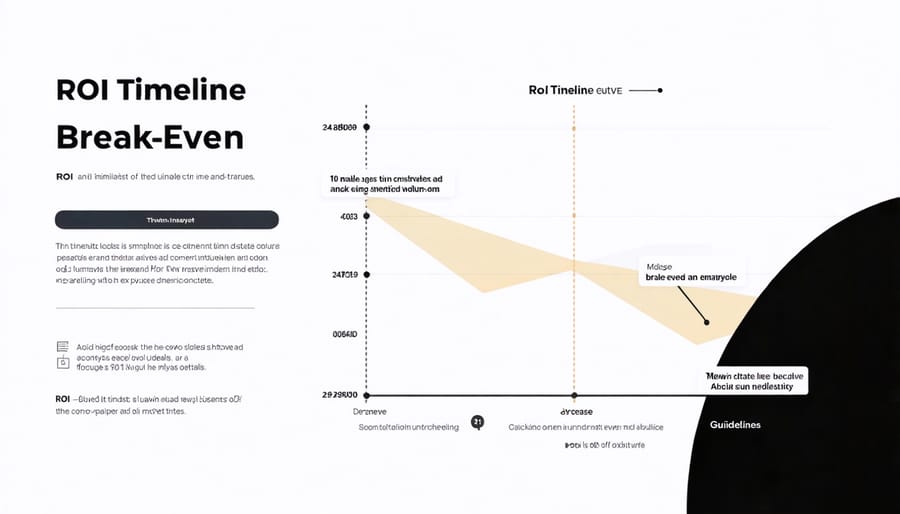
Real-World Performance Data
Energy Production Statistics
A 1 MW solar power plant typically generates between 1,600 to 1,800 kilowatt-hours (kWh) per day under optimal conditions, translating to approximately 4-4.5 units of electricity annually per installed kilowatt. This means a well-designed 1 MW plant can produce between 1.6-1.8 million units of electricity per year.
However, actual energy production varies based on several factors. Location plays a crucial role, with sunny regions like Arizona or California achieving higher outputs compared to cloudier areas. Seasonal changes also impact production, with summer months typically yielding 20-30% more energy than winter months.
Real-world data shows that most 1 MW plants operate at a capacity factor of 15-20%. This means they generate about 15-20% of their theoretical maximum output over a year. While this might seem low, it’s completely normal for solar installations and is factored into all financial projections.
Performance analysis from existing plants reveals that:
– Peak production occurs between 10 AM and 2 PM
– Average daily production is highest in June-August
– Annual degradation rate is approximately 0.5-0.8%
– Weather-related losses account for 3-7% of potential production
These statistics help investors make informed decisions about plant location and expected returns, while providing realistic expectations for energy generation throughout the year.
Financial Performance Metrics
A 1 MW solar power plant typically generates impressive financial returns when properly managed. Based on real-world examples from operational plants, investors can expect an average Return on Investment (ROI) of 15-20% annually, with some installations performing even better in optimal conditions.
Looking at profit margins, successful solar plants often achieve operating margins between 25-30%. For instance, a well-maintained 1 MW installation in Arizona reported a net profit margin of 28% in its third year of operation, while a similar facility in California achieved 26% after accounting for all operational expenses.
The payback period generally ranges from 5-7 years, depending on factors like local solar irradiance and electricity rates. A case study from Texas showed complete investment recovery in just 5.2 years, thanks to high local energy demand and excellent solar conditions.
Monthly revenue potential varies seasonally but typically ranges from $12,000-18,000 for a 1 MW plant. One notable example from Nevada demonstrated consistent monthly earnings of $15,500 during peak summer months and $12,800 during winter.
Most installations maintain a capacity utilization factor of 15-20%, though some achieve up to 25% with advanced tracking systems. These performance metrics translate to annual revenues between $140,000-200,000, making solar power plants an attractive long-term investment option for those seeking stable returns in the renewable energy sector.
Investing in a 1 MW solar power plant represents a significant but rewarding venture in the renewable energy sector. As we’ve explored throughout this article, the initial investment of $700,000 to $1 million can generate attractive returns through power purchase agreements and government incentives, with potential annual revenues ranging from $150,000 to $200,000.
The key to success lies in careful planning and consideration of all factors we’ve discussed: site selection, equipment quality, maintenance requirements, and local regulations. While the upfront costs may seem substantial, the 25-year lifespan of modern solar installations ensures long-term profitability, with most projects breaking even within 5-7 years.
For those interested in moving forward with a solar power plant investment, we recommend:
– Consulting with local solar developers for site-specific assessments
– Securing multiple equipment quotes from reputable manufacturers
– Investigating available government incentives and tax benefits
– Developing relationships with potential power purchasers
– Creating a detailed maintenance and operations plan
Remember that while costs and profits can vary by location and market conditions, solar power remains one of the most stable and environmentally responsible investment opportunities available today. With proper planning and execution, a 1 MW solar power plant can provide both attractive financial returns and contribute to a more sustainable future.

